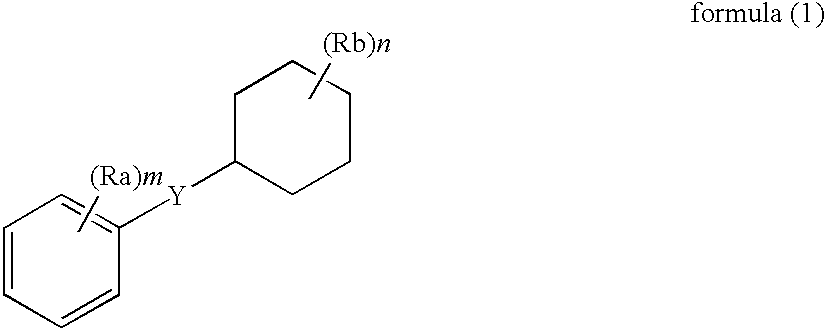Cellulose ester film, its manufacturing method, polarizing plate, and liquid crystal display
a technology of cellulose ester and cellulose ester film, which is applied in the direction of instruments, optical elements, transportation and packaging, etc., can solve the problems of reducing the durability the simple decrease in the thickness of the polarizing plate protective film produces various problems, and the polarizing plate durability is reduced, so as to achieve excellent dimensional stability, good moisture vapor transmittance, and the effect of reducing the thickness of the film
- Summary
- Abstract
- Description
- Claims
- Application Information
AI Technical Summary
Benefits of technology
Problems solved by technology
Method used
Image
Examples
example 1
1. Preparation of a Dope
The dope composition A as shown below was incorporated in a tightly sealed vessel, and stirred at 80° C. under increased pressure to prepare a cellulose ester solution. Particles AEROSIL 200V (produced by Nippon Aerosil Co., Ltd.) were dispersed in a part of ethanol to be added, and incorporated in advance in the tightly sealed vessel. The resulting cellulose ester solution was cooled to a temperature at which casting was carried out, allowed to stand, subjected to defoaming treatment, and filtered employing Azumi filter paper No. 244, produced by Azumi Roshi Co., Ltd. Thus, a dope A was prepared. Dopes B through G were prepared in a similar manner as a dope A.
(Measurement of Substitution Degree of Cellulose Ester Used)
The substitution degree of cellulose ester used was measured according to the method defined in ASTM-D817-96.
(Dope composition A)Compound 1-1415kg(a compound falling within formula (1))UV absorbentsUV-10.5kgUV-20.5kgUV-50.5kgParticles AEROSIL 2...
example 2
Polarizing plate samples were prepared employing the cellulose ester film samples prepared in Example 1 according to the procedures described later, and the resulting polarizing plate samples were evaluated according to the methods also described later.
Polarizing plate sample 1 (inventive) was prepared employing a cellulose ester film sample 1 as a polarizing plate protective film according to the following procedures.
1. Preparation of Polarizing Film
A 120 μm thick polyvinyl alcohol film was uniaxially stretched (at 110° C. by a factor of 5). The resulting film was immersed for 60 seconds in an aqueous solution comprised of 0.075 g of iodine, 5 g of potassium iodide, and 100 g of water, further immersed at 68° C. in an aqueous solution comprised of 6 g of potassium iodide, 7.5 g of boric acid, and 100 g of water, washed with water, and dried. Thus, a polarizing film was obtained.
2. Preparation of Polarizing Plate
The polarizing film obtained above and a polarizing plate protective fi...
example 3
(Preparation of Liquid Crystal Panel and Liquid Crystal Display Sample)
The two polarizing plates were peeled from the both sides of the liquid crystal cell of a commercially available display panel (a color liquid crystal display MultiSync LCD1525J TYPE LA-1529HM, produced by NEC Co., Ltd.). Subsequently, the two of each of inventive polarizing plate samples 1 to 5 and comparative polarizing plate samples 6 and 7 prepared in Example 2 were superposed on the liquid crystal cell so that their polarizing direction was in accordance with the original one to obtain a liquid crystal panel. The resulting liquid crystal panel was installed in the color liquid crystal display, and contrast was visually evaluated. As a result, it has been confirmed that the liquid crystal panel employing the inventive samples maintained a high contrast for a long term as compared with the liquid crystal panel employing the comparative samples.
Effects of the Invention
The present invention can provide a cellulo...
PUM
| Property | Measurement | Unit |
|---|---|---|
| RH | aaaaa | aaaaa |
| moisture vapor transmittance | aaaaa | aaaaa |
| thickness | aaaaa | aaaaa |
Abstract
Description
Claims
Application Information
 Login to View More
Login to View More - R&D
- Intellectual Property
- Life Sciences
- Materials
- Tech Scout
- Unparalleled Data Quality
- Higher Quality Content
- 60% Fewer Hallucinations
Browse by: Latest US Patents, China's latest patents, Technical Efficacy Thesaurus, Application Domain, Technology Topic, Popular Technical Reports.
© 2025 PatSnap. All rights reserved.Legal|Privacy policy|Modern Slavery Act Transparency Statement|Sitemap|About US| Contact US: help@patsnap.com



